Anti-Inflammatory Lifestyle
This post covers every aspect of inflammation: the good, the bad and the ugly. What is it exactly? We’ll look at what causes it and what you how you embrace anti-inflammatory living to heal and prevent inflammation naturally.
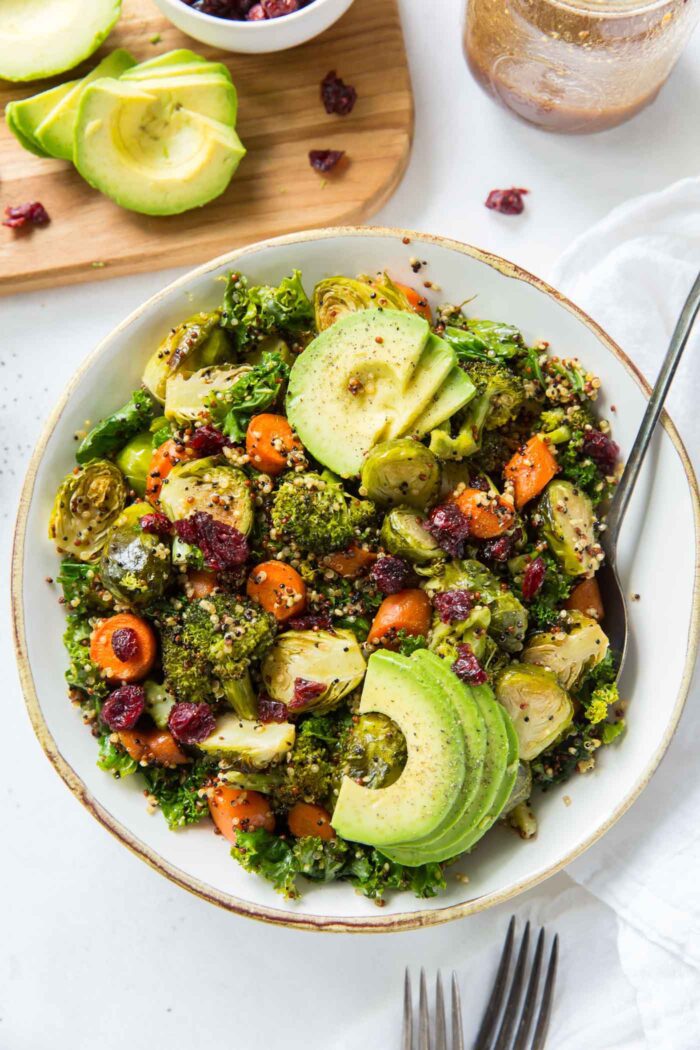
Before we start…disclaimer: I am not a Doctor or other health professional so please consult the appropriate professional before making any changes to your diet, health, or other applicable areas. You should always do what is right for your own personal life.
An Intro to Inflammation
While inflammation is a natural process in the body and a normal response to injury or infection, when acute inflammation persists and becomes chronic is where the problems start. Chronic inflammation sits in the background of every major disease.
From heart disease to obesity, cancer, stroke and rheumatoid arthritis, chronic inflammation plays a role. Inflammation is the leading reason people visit health care practitioners. Everything from colitis to gastritis or pretty much anything else in “itis” you can bet that inflammation is involved.
Anti-Inflammatory Living to Heal Inflammation
Luckily, through anti-inflammatory living we can not only prevent future diseases from occurring but we can reverse existing conditions and vastly improve how we feel on a daily basis. In the case of inflammation, food is truly the best medicine. When we start to think about healing the body as whole by living an anti-inflammatory lifestyle, we’ll see positive results in our health, inside and out.
We can enjoy results such as improved mood, clearer skin, better digestion, weight loss and more energy and best of all, we’ll reduce our risk of developing chronic diseases.
The best medicine to ease the massive suffering endured by so many in our population today is an active lifestyle and an anti-inflammatory diet” says Cherie Calbom, MS, The Juice Lady’s Anti-Inflammation Diet.
What is Inflammation?
Inflammation is a completely natural and essential process in which the immune system responds to anything attacking the body. Inflammation increases blood flow to an affected area or injury and this may result in redness or warmth in the area.
Symptoms of Inflammation
We’re all familiar with what inflammation looks like on the surface. Redness, heat, swelling and pain are all forms of inflammation. Inflammation is a normal, healthy emergency response. It helps bring immune activity to a site of injury.
Sore throats and sunburns are two examples of a natural inflammatory response. During an inflammatory response, a host of physiological processes occur, all mediated by our immune system. Chemicals like histamines, as well as white blood cells, are involved to help bring healing to the affected area.
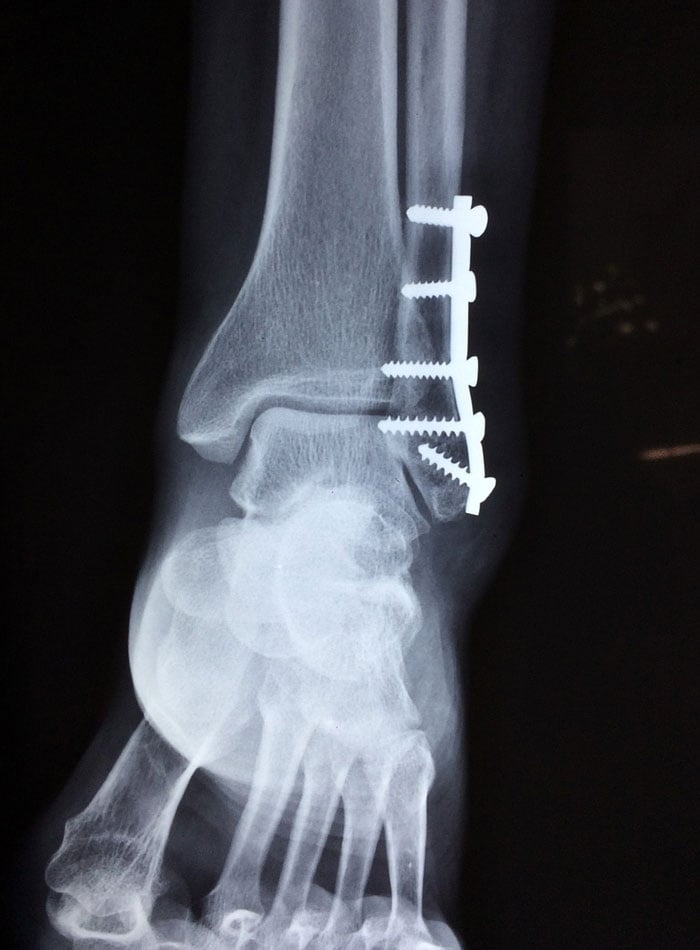
When Inflammation Becomes a Problem
When Inflammation turns from a temporary immune response to a chronic, persistent issue is where the problem arises. If the immune system is continually being disrupted and is on constant defense, a continued inflammatory response occurs. If that inflammation lasts more than 72 hours or up to a maximum of 5 days, it’s time to start looking at the root cause of it.
Once inflammation moves past that acute stage, we’re now talking about chronic and systemic inflammation. Chronic inflammation that serves no purpose in the body can start to actually cause illness instead of its original function of healing.
Chronic inflammation is ongoing, low-level inflammation and unlike acute inflammation such as a sunburn or swollen ankle, it is invisible to the human eye, and even though we can’t see it the symptoms, chronic inflammation causes a domino effect in the body and we may experience symptoms from fatigue to joint pain.
Symptoms of Chronic Inflammation
- joint pain or other aches and pains
- fatigue
- depression
- digestive issues
- acne, eczema, psoriasis
- food sensitivities
- high blood pressure
- allergies
- difficulty losing weight
- autoimmune conditions such as arthritis
Furthermore, these diseases, allergies and infections are either directly caused or exacerbated by chronic inflammation:
- cancer
- asthma
- diabetes
- IBS
- psoriasis
- migraines
- dementia
- obesity
- arthritis
- coronary artery disease
- osteoarthritis
The list goes on.
It is now common knowledge that chronic inflammation is directly connected to type 2 diabetes and heart disease. A diet high in pro-inflammatory foods such as refined grains, processed meats and sugars which are prevalent in the Standard American Diet, are placing an ever-growing toxic load on our bodies.
Fortunately, we can turn it around, reducing inflammation and the demand it places on our cardiovascular, digestive and other systems of the body.
A Symptom of Hidden Inflammation
There is another symptom of inflammation that people might not be so familiar with and that is loss of function. Loss of function can be a sign of hidden inflammation. It can present itself in anything from poor memory, to trouble focusing and paying attention and even loss of movement and athleticism.
How to Test for Inflammation
We can have our c-reactive protein measured to test for inflammation. This is a good way to monitor progress as you begin your anti-inflammatory lifestyle journey. C-reactive protein is made by the liver and circulates the blood. It is a good marker to determine how inflamed you are.
A test for CRP should come back between 1 and 5. If it’s above 5, you should be concerned and start taking steps to reduce inflammation. If it’s about 8, you may be running the risk of heart disease. If it’s above 10, you may be looking at auto-immune disease. You can ask your doctor to be tested for C-reactive protein.
Issues with Conventional Treatment
Traditionally, inflammation has been treated with drugs and surgery and in the case of acute illness, these treatments can be highly effective. Where these methods fail, however, is in preventing future conditions or addressing the root of the problem.
NSAIDs or non-steroidal anti-inflammatory drugs are commonly prescribed to treat inflammatory conditions. This includes drugs such as ibuprofen and naproxen. The issue with NSAIDs is that they’re not specific so they cause blood loss from the stomach and GI tract if taken for too long. Possible side effects include ulcers and gastric upset if their use continues.
As for conditions such as rheumatoid arthritis, the typically prescribed medications are even harder on the body than NSAIDs. Drugs such as Imuran can have side effects worse than the disease itself.
What’s missing in conventional treatments?
With these methods of treatment, although they can be lifesaving in the case of acute illnesses, the underlying cause of the illness is not being addressed. These drugs take no steps to prevent inflammation and instead just mask the symptoms. Over time, side effects can cause more problems than the disease ever would have.
In comes a natural approach to preventing inflammation and promoting overall health. It makes sense to adopt a healthy diet that will naturally reduce inflammation rather than using anti-inflammatory drugs on a long-term basis.
There’s a lot of money in the Western diet. The more you process any food, the more profitable it becomes. The healthcare industry makes more money treating chronic diseases (which account for three quarters of the $2 trillion plus we spend each year on health care in this country) than preventing them. ― Michael Pollan, Food Rules: An Eater’s Manual

Why aren’t more doctors prescribing a change in diet and lifestyle?
Why isn’t the root cause of inflammation being addressed instead of the symptoms just being masked, causing side effects from ulcers to infections and even heart attacks?
You can’t prevent inflammation with drugs or surgery but you can prevent, control, reduce and even eliminate it by addressing its root cause. Lifestyle and dietary changes have a powerful ability to heal us inside and out and you have the power to make those changes.
Eating the right way would largely obviate the enormous costs of using drugs, as well as their side effects. Health care costs would drop and medical mistakes would wane as premature death plummeted. In essence, our health care system would finally protect and promote our health as it is meant to do. The science is there and it must be made known. It is time to stand up, clear the air and take control of our health. ― Dr. T. Colin Campbell, The China Study
Causes of Chronic Inflammation
Every action we take and choice we make is either anti-inflammatory or pro-inflammatory. Actions that promote disease are the same ones that create chronic inflammation. Every food we choose to eat, every time we skip a workout, smoke a cigarette, stay up too late or don’t manage our stress levels either causes inflammation in the body or helps heal and prevent it.
In Meals that Heal Inflammation, Julie Danliuk states that there are six main causes of inflammation:
- toxicity
- infection
- allergy
- nutritional deficiency or excess
- injury
- emotional trauma
In the book, she goes into detail on these six causes of inflammation but today we’ll just take a quick look at each one.
As you read through these, think about they’re all connected and the power that healing foods have to prevent these common causes of chronic inflammation. If we eat well, stress is reduced, we sleep better, our digestive system is healthier so we can absorb more nutrition from the food, our brains function better, allergies are reduced, we have more energy so we exercise more, our hormones are more balanced which in turn cycles back around to sleep and stress, both of which tie into our weight, our immune system is stronger so we get sick less and on and on and on.
Every process works together and we are in control of the choices we make to either prevent or promote the inflammation that affects these areas of our health.
Let that sink in. That the food we eat can either hold you down or lift you up. It has the power to heal you from the inside out on the deepest most cellular level. What we eat literally becomes a part of us. What do you want to be made of? Every process in our body is connected. Understand how powerful that is and it will be easier to make better food choices. Don’t you want to fuel your engine with the best possible energy you can?
The Six Main Causes of Inflammation
1. Toxicity
We are subject to more toxicity in our environments than ever before. Long-term exposure to toxins not only sustains inflammation but when we’re experiencing chronic inflammation, it makes it more difficult for the body to rid itself of these toxins, thus creating an endless cycle. Toxins can include everything from antibiotic residue, to hormones and pesticides on and in the food we eat, to what’s in our water, to tobacco, alcohol, the chemicals in our personal care products, heavy metals, molds, as well as the toxins produced by our natural metabolic processes.
If we have a strong immune system and take steps to reduce our toxic load, our bodies are able to remove toxins before they build up however if we are constantly exposing ourselves to toxins without a healthy immune system to neutralize them, they build up and inflammation occurs to protect the cells.
We want to give our bodies enough resources to neutralize the toxins from our natural metabolic process but if we’re spending all those resources dealing with excess toxins from poor food and the lifestyle choices we make, we don’t have much leftover to run our bodies efficiently, making us more susceptible to disease and infection. An endless and vicious cycle starts to occur.
2. Infection
Untreated infections can be a cause of chronic inflammation. When pathogenic organisms such as parasites, bacteria and viruses attack the body, the immune system responds with inflammation. We may be experiences infection in more ways than you think and any form of infection can impact the inflammatory response.
Everything from gingivitis to candida is a form of chronic infection and can lead to chronic inflammation. The most important way to fight this is to look at your health holistically and take the necessary steps to improve the health of all your organs. If there’s some small pain or issue that’s been bothering you, take care of it because there’s a good chance it could lead to more problems down the road.
We can improve our resistance illness by including immune superfoods in our diet. Shitake mushrooms, garlic, squash, papaya and sesame seeds are all excellent immune-boosters but the key is eating a wide range of colour fruits and vegetables to maximize the minerals, vitamins and antioxidants we consume.
3. Allergies
Food allergies can occur as we get older and they usually result in excess inflammation. Food intolerances are becoming more and more common today. Food intolerances can develop when we lack variety in our diet. The two most common food allergens are the proteins found in wheat and dairy, gluten and casein, respectively.
If you experience excessive bloating after eating certain foods, you may have an allergy or sensitivity. A food allergy is a type of immune response that can cause pain due to the inflammation that occurs in the body as it tries to defend itself against the allergy. Keep eating foods that you’re sensitive or allergic too and chronic inflammation is now occurring.
Food allergens can develop different ways. They can cause damage to the gut lining or develop due to a damaged gut lining. Either way, both result in subsequent inflammation in the intestines and damage in this area can make it more likely that toxins are able to seep into the blood system. Once toxins are in the blood, the entire immune systems gets involved.
I strongly feel that fixing the gut can help all chronic health problems. The health of your gut determines what nutrients are absorbed and which toxins, allergens and microbes are kept out. Poor digestion is found to be the root cause of many diseases, ranging from allergies to arthritis, and acne to autoimmune disorder because the gut plays a large roll in our immune system. – Julie Daniluk, RHN in Meals that Heal Inflammation
Common food allergens include wheat, soy, conventional eggs, conventional dairy and corn. If you’re struggling with food sensitives or allergies, it can help to be tested for sensitives or do an elimination diet to determine what it is that’s causing issues. Meals that Heal Inflammation provides guidelines for removing common irritants from the diet then re-introducing them slowly one at a time.
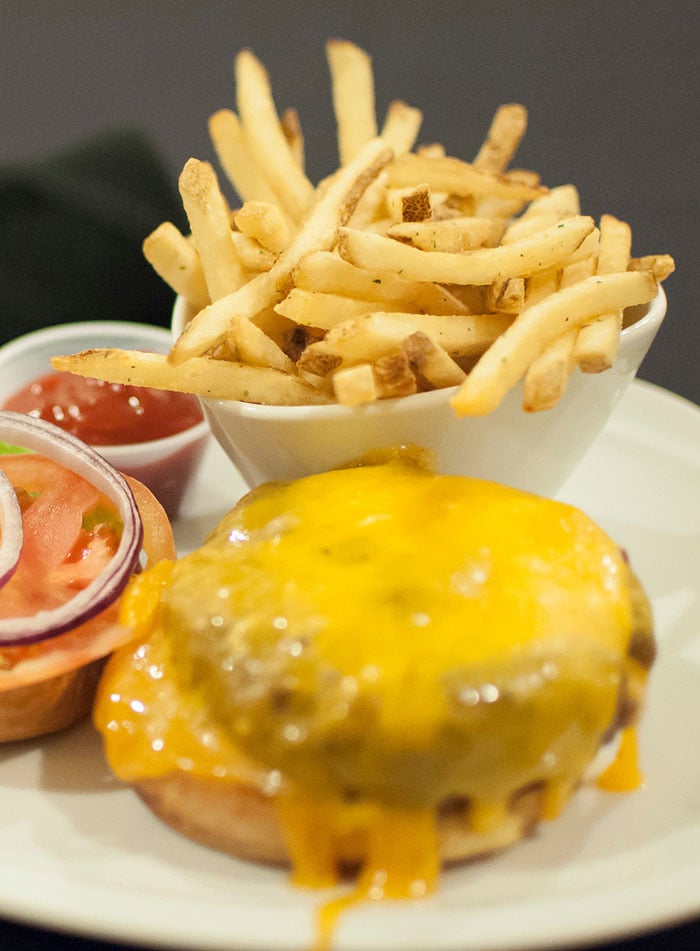
4. Nutritional Deficiencies and Imbalances
Nutritional deficiencies and imbalances can throw our hormones out of whack, straining the immune system and causing chronic inflammation. The best example of this is the overconsumption of refined carbohydrates such as sugar and the subsequent spike in blood sugar it causes. When we eat too much sugar for the body to deal with all at once, glucose remains in the blood and can cause damage to blood vessels and tissues.
The body responds with, you guessed it, an inflammation reaction. Eating whole foods the body recognizes and are rich in micronutrients is so important. Highly processed foods do not contain the essential nutrients needed for proper digestive and pancreatic health.
5. Injury
I’m sure many of you have experienced the pain and swelling that occurs when you roll your ankle. If you haven’t been taking the steps to keep your body strong, a sprained ankle could last much longer than it needs to, thus once again, chronic inflammation occurs.
This is why exercise is so important in keeping the body ready to respond to the demands we place on it. In addition, by adopting a healthy, whole food diet is important in supporting our bodies natural ability to heal itself quickly and without the need for drugs that may damage tissue.

6. Emotional Trauma
Stress and overall health are deeply connected and in our society today, stress levels are at an all-time high. Stress is totally normal and can help us to become stronger and healthier but it must be combined with periods of rest so we can bring those stress levels back down.
This is where techniques for emotional health come in to play: therapy, yoga, meditation, exercise, self-care, exercise and other methods of addressing emotional trauma and dealing with stress. If we don’t find a way to reduce stress, high levels of hormones like adrenaline and cortisol can lead to chronic inflammation.
Getting to The Root: Emotional Eating and Healing
I love this section of Meals that Heal Inflammation because I think it’s hugely important in improving our health and making a real sustainable change towards living a fully committed, healthy lifestyle. Sometimes our relationship to food and nourishment gets mixed up in emotions.
Before we can make a real change and truly live an anti-inflammatory lifestyle, we need to address any underlying emotional issues that might be holding us back.
Emotional eating disorders are common and often under-looked but if we address the emotional piece of how we eat, we can start to permanently change and start eating well from a place of peace and joy.
I believe education and understanding to play a big role here as if we can understand how powerful the food we eat can be, it’s easier to make choices that truly nourish and satisfy us, both physically and mentally.
Self-Awareness and Eating Mindfullly
Once I became more aware of my own food choices and started to recognize habits, I was able to take my health and nutrition to the new level. It’s important we slow down when we eat and notice our feeling and emotional state when we eat.
Are you truly hungry or just attempting to fill some other void? Are you eating food out of self-love or self-loathing? Mindfulness can help us distinguish between true hunger and emotional craving.
This all goes beyond food. Using techniques for improving our mental health and stress levels can have a great impact on the way we eat. Journalling, meditation, strong relationships, having fun, letting go, thinking positively, getting enough sleep, practicing gratitude and living in a clutter-free environment can all help to improve our emotional state leading to better food choices, reduced stress and in turn, reducing and preventing chronic inflammation.
Holistic living includes wellness and stress management, nutrition and exercise. We need to work on all three of these areas to live our best lives and each of them play a role in an anti-inflammatory lifestyle.
We’re going to get into the role that stress plays more in the next post in my anti-inflammatory series but for now just know what it’s very important that we find ways to reduce stress levels in our lives.

Inflammation Causing Foods
There’s no big secret as to what foods cause inflammation. We’ve already talked about taking a holistic, whole-food approach to what you eat to naturally heal inflammation. We talked about the causes of chronic inflammation such as food allergies and nutritional deficiencies or imbalances. Now let’s take a deeper look at the worst culprits when it comes to causing an inflammatory response in the body.
A lot of this list comes down to toxicity. For example, artificial sweeteners must be processed through the liver, increasing its toxic load and so on with the other foods on this list. If a food has a massive ingredient list full of things your body may not recognize, the harder your body must work to metabolize it.
Overview of Potentially Inflammatory Foods
- gluten-containing products
- conventional dairy products
- nightshades*
- refined sugars
- refined grains
- conventional meats
- processed deli meats
- peanuts and peanut butter
- coffee
- conventional eggs
- processed foods
- fried foods
- artificial sweeteners (Aspartame and Sucralose ie. Splenda, Sweet n’ Low, Equal, NutraSweet, diet soda)
- foods containing hydrogenated oils or high-fructose corn syrup
- alcoholic beverages**
- processed soy products (if you eat soy, go for fermented options such as tempeh)
*Potatoes, peppers, eggplant and tomatoes, which are part of the nightshade family of vegetables should be avoided by anyone with arthritis however the may not be an issue for everyone. Nightshades contain alkaloids that affect nerve-muscle function, digestion and joint flexibility. This also includes tobacco. These can be eliminated for a period of time then slowly introduced back into your diet to see if you’re sensitive to them.
**Alcoholic beverages such as beer and spirits are hard on the liver, a key organ for detoxifying the body.
Does dairy cause inflammation?
As for dairy products, though they’re high in saturated fat, that isn’t really the issue. The issue is the number of toxin stores in the fat and since most people consume dairy from conventionally raised dairy cows, they are bombarded with toxins in the form of pesticide and antibiotic residue and genetically modified soy used in cattle feed.
Cattle are natural herbivores but today they’re fed grain and even animal protein, which contains its own accumulated toxins, thus furthering the toxic load. We talked earlier about how toxic load is a root cause of inflammation and dairy from conventional dairy factories is high in toxins, thereby contributing to the load the immune system must process and eliminate.
You are what you eat is a truism hard to argue with, and yet it is, as a visit to a feedlot suggests, incomplete, for you are what what you eat eats, too. And what we are, or have become, is not just meat but number 2 corn and oil. ― Michael Pollan, The Omnivore’s Dilemma: A Natural History of Four Meals
If you’re worried about calcium, don’t be. We don’t need milk to keep our bones strong. There are many excellent plant sources of calcium found in foods such as dark green leafy vegetables like kale and spinach, broccoli, bok choy, figs and white beans.
We also talked about allergies being a cause of inflammation and cow’s milk is a common allergen in both adults and children. Milk products are known to stimulate the secretion of pro-inflammatory cytokines that elicit an inflammatory response.
If you do want to include dairy in your diet, choose organic options to avoid the pesticides, hormones and antibiotic residues regular dairy can contain. Grass-fed, pasture-raised organic dairy will be the best option.
Does gluten cause inflammation?
The issue with gluten today is that the diet of the average person is so heavily based on wheat. A bagel or cereal for breakfast, a sandwich for lunch and pasta for dinner. It’s just being consumed in such high quantities and because wheat is not what it was a hundred years ago due to genetic modification and the removal of nutrients during processing. It’s this highly refined form of wheat that’s the issue and unfortunately, this nutritionally-poor wheat can be found in many processed foods you’d find at the grocery store.
In Wheat Belly by Dr. William Davis, he suggests that many of our health problems today are due to the overconsumption of modern-day wheat. He attributes wheat to be one of the causes of problems such as fatigue, arthritis, obesity and digestive conditions.The issue is not necessarily gluten, especially if you don’t have an allergy or sensitivity to it. The issue is in quantities that are being eaten and how wheat looks today in comparison to its original form.

Unless you’re allergic to wheat and grains, they do not cause an inflammatory response. Whole-grain consumption has actually be associated with less inflammation and not more.
Numerous studies have pointed to whole grains causing less inflammation in the body so you don’t have to be worried about enjoying healthy, complex carbohydrates in the form of whole grains. However, if you have a wheat intolerance or allergy or are sensitive to gluten, wheat certainly can cause inflammation.
Eat food. Not to much. Mostly plants. – Michael Pollan, In Defense of Food: An Eater’s Manifesto
I’m just going to go ahead and say it again. Eat whole, real food. That’s what an anti-inflammatory diet is. You are what you eat. Food is energy. Food that is organically grown and as local as you can get it will offer the highest-quality energy and nutrients for you to fuel your body with. Take that and do the best you can.
Finding Alternatives
Just because you’re going to be eating a healthy and naturally anti-inflammatory diet doesn’t mean you can’t still enjoy your favourite foods. The key is to find healthy alternatives to satisfying cravings. We’re going to talk more about healthy alternatives to processed foods in the coming posts in this series.
Anti-Inflammatory Diet Overview
Let’s take a quick look at what an anti-inflammatory diet looks like. If you focus on consuming a wide range of whole foods, eating an anti-inflammatory diet is very simple and straightforward: eat whole foods, ditch processed foods and you’ll already be naturally eating an anti-inflammatory diet.
Here is a very quick overview of how you can reduce and prevent inflammation through the foods you eat.
- eat a wide range of whole foods and vary the foods you eat on a daily basis
- if you eat meat, eggs or dairy, choose organic from free-range, ethically treated animals
- includes as much fresh foods as possible and an abundance of fruits and vegetables
- minimize or eliminate your consumption of processed foods
- maintain optimum hydration levels
- eat the right balance of carbohydrates, fats and protein
- improve your gut flora by eating fermented foods and taking a probiotic
- avoid spiking your blood sugar levels
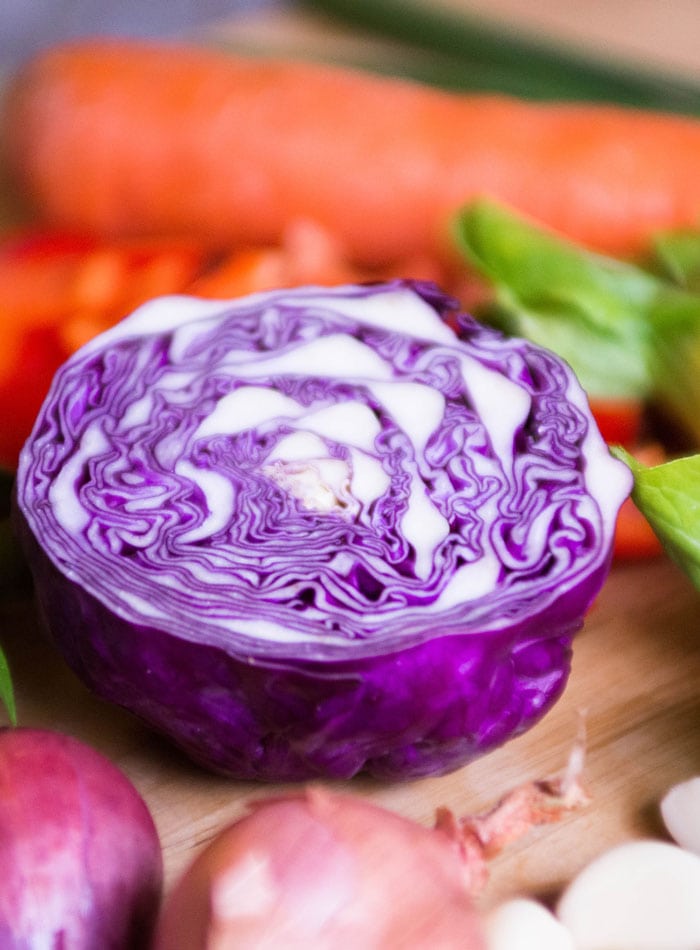
The Carbohydrate Connection
There are so many misconceptions when it comes to carbohydrates. Carbs are bad, gotta eat low carb. Nope, Eat high-carb, low-fat. Don’t eat potatoes. Bread is bad. What’s the deal??!
Well, first of all, carbohydrates are necessary to live and they’re absolutely essential to our health. Where things have gone haywire with carbohydrates in our society today is their source. Now more than ever, people are getting their carbohydrates in the form of overly processed foods which are typically high in refined sugars and grains.
Carbohydrates are our body’s source of quick energy. A good source of carbohydrates can make you feel energized but others can leave you feeling lethargic. It’s important to know the difference so you can choose the right carbs to help fight inflammation.

Simple vs. Complex Carbohydrates
Both simple and complex carbs are eventually converted into glucose, the leftover of which gets converted into glycogen and either used immediately or stored for energy. The process of how this occurs is a little different for each source.
Simple carbohydrates such as refined sugars and grains are digested quickly causing a spike and consequent crashes in blood sugar levels. If we consistently eat foods that spike our blood sugar, we start to run the risk of decreased insulin sensitivity.
Insulin resistance may lead to conditions related to chronic inflammation such as obesity, heart disease, diabetes and cancer. Complex carbohydrates digested more slowly, helping to maintain more stable blood sugar levels.
Highly refined, simple carbohydrates from sugar and grains can also disrupt gut flora whereas complex carbohydrates support healthy gut bacteria. Yeasts and pathogenic bacteria love simple sugars but by choosing complex carbohydrates instead, we can support the good bacteria we actually want in our gut.
When choosing carbohydrates from grains, reach for whole-grain options like amaranth, barley, buckwheat, millet, spelt and quinoa. Other good sources of complex carbohydrates include sweet potato, beans, lentils, blueberries, broccoli and oats.
What About Fruit?
The simple carbohydrates in refined foods such as candy bars are the most inflammatory but there are also healthy, anti-inflammatory foods such as fruits and some vegetables that are simple carbohydrates. Unlike candy bars, however, fruits and vegetables also contain fiber and micronutrients that outweigh the cost of the simple sugars.
Fruits and starchy vegetables can be a great source of energy and both are packed with so many nutrients I wouldn’t recommend eliminating them however they should be enjoyed in moderation and in appropriate serving sizes.
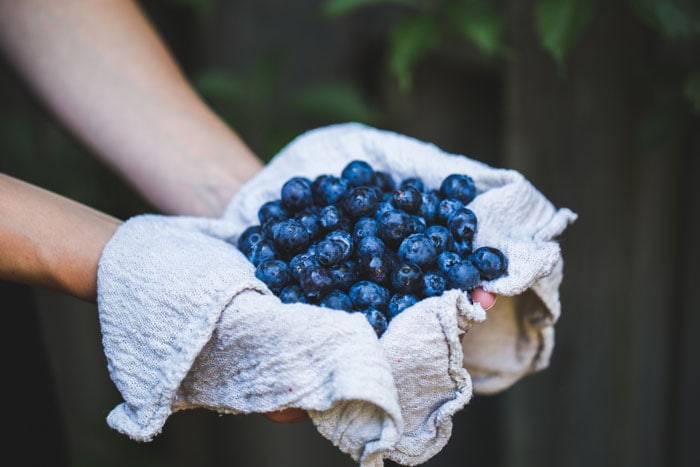
What Foods Are Refined Carbohydrates?
If you’re unsure of what refined grains are think packaged and frozen desserts, conventional store-bought bread, processed cookies, cakes, muffins and pastries, processed granola bars, pasta and sugary breakfast cereals, frozen pizzas and basically anything else that can be found in the packaged snack aisle.
Processed foods with high amounts of refined sugar include soda, juice, condiments like ketchup and BBQ sauce, pasta sauces, frozen meals, white sugar and processed food with corn syrup or high-fructose corn syrup listed. These gotta go, guys.
When in doubt read the ingredient list. If sugar, corn syrup or high-fructose corn syrup are listed high on the ingredient list, you’re looking at added refined sugars.
The Best Sources of Carbohydrates
The best sources of carbohydrates are whole plant foods. Whole food sources of complex carbohydrates also provide important minerals, vitamins and fiber that keep you fuller longer than refined carbohydrates, helping you to maintain a healthy body weight by preventing overeating.
Read more about the best sources of fiber here and the best sources of healthy carbohydrates here.
Using the GI Index
We can use the glycemic index, or GI, to help us choose foods that are digested more slowly creating a gradual rise in blood sugar instead of a sudden spike.
You can eat low GI foods on their own or in combination with higher GI foods to help mitigate the effect that high GI foods have on our blood sugar. I talked a lot about blood sugar in my post on hunger and once again, it’s important to understand how each of these areas of nutrition are connected.
What About Fiber?
Fiber is a type of complex carbohydrate important for its role in gut bacteria, improving the body’s ability to utilize nutrients, helping to balance blood sugar levels, maintaining regular bowel movements and supporting a healthy intestine.
Nutritional guidelines suggest we get at least 30 grams a day but it’s common for people to get less than half of that. Most days I get over 50 grams coming from plant sources such as vegetables, grains, beans and fruits. Learn more about the best sources of fiber here.
Diets low in fiber can cause constipation, IBC, diverticulitis, conditions that are either a consequence or a cause of chronic inflammation.
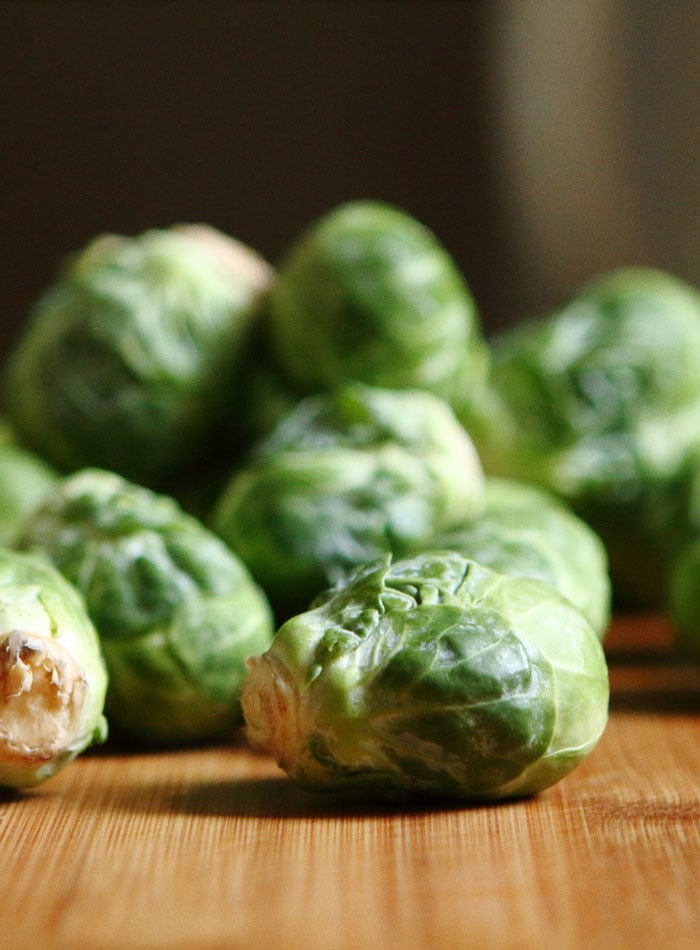
Protein and Inflammation
Protein is made up of amino acids. We use amino acids for cell growth, metabolism, immune defense and repair, making protein an essential nutrient for healing. I’m not going to get too into protein but let’s look at some inflammation-causing sources of protein and healthier choices you can make to get protein in your diet.
Inflammation Promoting Protein Sources
- processed and refined food
- deli meats, hot dogs and other processed meats
- smoked meats and fish
- conventional dairy desserts such as ice cream and canned whipped cream
Healthy Protein Sources
- raw, soaked and sprouted nuts and seeds
- legumes
- fermented beans such as tempeh
- cooked seed grains such as quinoa
- spouted grains and beans
- eggs from free-range, seed-feed animals
- fermented dairy from organic, free-range and grass-fed goats, sheep and cows
- organic, free-range, grass-fed meats
The Role of Fats in Inflammation
Fats play a big role in inflammation. Again, by reducing the number of processed foods we eat, we will naturally reduce inflammation because processed foods typically contain pro-inflammatory refined oils.
This includes oils like vegetable oil, corn oil, sunflower oil and safflower oil that you’ll typically see on the ingredient list of processed food items. You should try to completely eliminate any trans fats in the diet, most commonly listed on packaging as partially hydrogenated oils.
Instead of getting our dietary fats from the oils added to processed foods, we should focus on adding high-quality fats from foods such as avocado, nuts, seeds and natural nut butter.
We need dietary fat to maintain vital body functions, support cell growth and inhibit excessive fat storage and rather than being concerned about how much fat we consume we should pay attention to the type of fat.
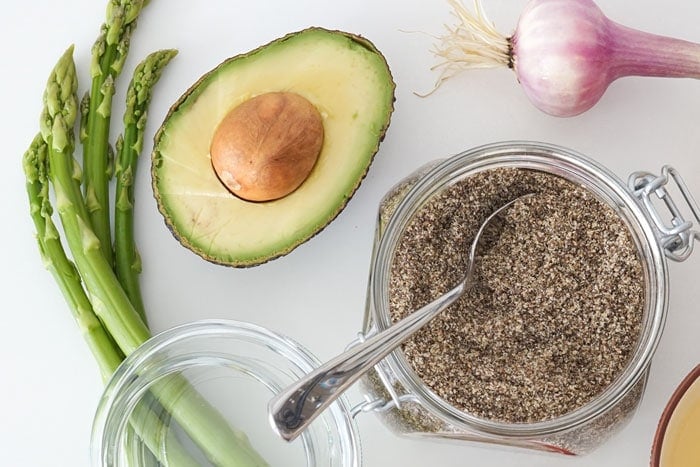
Three Types of Fats
Fatty acids fall into one of three major categories:
- saturated fatty acids (SFAs) – comes mostly from dairy products, red meat, poultry and processed foods, as well as coconut oil
- monounsaturated fatty acids (MUFAs) – found in oils such as olive oil as well as avocado, has been called the “good fat”
- essential polyunsaturated fatty acids (PUFAs, omega-3 and 6) – considered “essential” because the body is unable to produce them and we must get them through our diets
Before we get into the essential fatty acids. Let’s take a quick look at saturated and monounsaturated fatty acids. Most people think that saturated fats aren’t good for you and this is true to some extent if you consume excessive amounts of them.
For instance, a high intake of SFAs from grain-fed farm animals contributes to inflammation. They also compete with the essential fatty acids, omega-3 and omega-6 for metabolic enzymes, increase levels of pro-inflammatory chemicals and congest the liver.
That being said, a moderate amount of saturated fats can be put to good use in a healthy body. The thing to remember is that balance is key. Excessive intake of any fat can detrimental if your liver and gallbladder are congested so a balance of all dietary fats, eaten in moderation is the way to go.
Eliminating Trans Fats
Trans fats are made through a process called hydrogenation in which an otherwise-healthy monounsaturated fat is exposed to heat, turning it into a solid. Trans fats are used heavily in processed foods for their ability to extend the shelf life of foods.
Numerous studies have connected high trans fatty intake to increase risk for cardiovascular disease of all sorts, stroke, cancer, aggressive behaviour, inflammation, increased all cause mortality and many more health issues. -Jessica K. Black, N.D., The Anti-Inflammation Diet and Recipe Book
Hydrogenated oils are found in everything from processed peanut butter to low-fat “health foods” and many of the cookies, crackers and other processed you’d find in a typical grocery store. Make sure you read ingredients lists for hydrogenated or partially hydrogenated oils and eliminate anything containing those from your diet.
Cooking Oils and Inflammation
One of the major problems with oils in the Standard American Diet today is that unstable oils are being used to fry and cook foods on high heat. It’s common to fry foods with olive oil this damages it. Avocado oil and coconut oil both have high smoke points and are the better for higher heat cooking but never allow them to reach their smoke point.
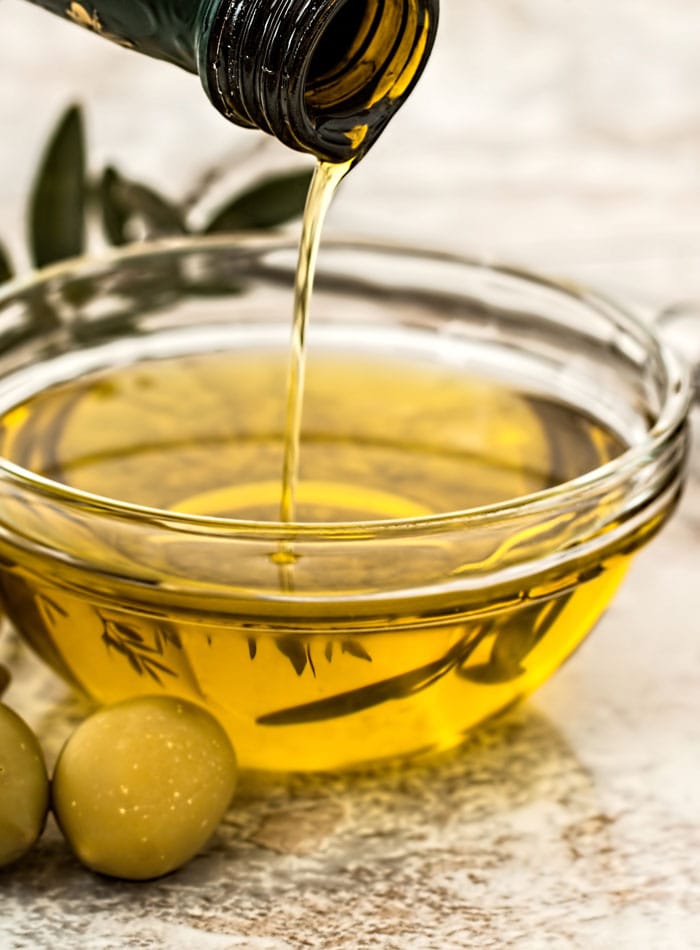
The Omega-3 to Omega-6 Imbalance
Since the proliferation of oil-seed processing, the intake of vegetable oils has increased substantially. This overconsumption of these processed oils has thrown of the ratio of omega-3 to omega-6 in the Standard American Diet (SAD) way off. With people including more and more processed and refined foods as well as grain-fed, conventional animal meats, the ratio is more disproportionate than ever.
People are now consuming up to as much as 25 times more omega-6’s than we should be getting. Many health authorities believe overconsumption of omega-6 contributing to this massive imbalance in EFAs to play a significant role in the increasing rate of inflammatory conditions today.
Omega-3 and omega-6 essential fatty acids are the most anti-inflammatory fats. Both fats, when consumed in the proper ratio from high-quality sources have powerful anti-inflammatory properties. They support cardiovascular health, lubricate joints and skin, boost the metabolism, support healthy immune and nervous systems and help balance hormones.
Where do Omega-6’s Come From?
Omega-6 fatty acids are much more common in the SAD and typically come from corn, peanut, soybean, canola, sunflower and grade and all of these foods are common sources of oils used in cooking and heavily in processed foods.
The poor-quality of omega-6 fatty acids in people’s diets today not only decreases their power as anti-inflammatories but actually makes them cause inflammation. Not only that, the excess of omega-6 in our diets today makes it difficult for the body to use the enzyme needed to convert foods like nut sand seeds into usable omega-3.
One of the reasons that omega-6 becomes inflammatory is that essential fatty acids are extremely sensitive to high heat, light and free radicals. When those sources of omega-6 fatty acids we talked about are used in frying, cooking, hydrogenation and refined for use in processed foods, they become damaged. Damaged essential fatty acids wreak havoc in our bodies, particularly on the liver.
The best thing you can do to improve your diet if you’re consuming a substantial amount of omega-6’s is working towards eliminating these damaged sources from your diet. You can switch to avocado, olive and sesame seed oils to replace refined vegetable oils and cut out all over-processed foods in your diet.
Make sure you’re using raw, unrefined oils and if you do cook with oils, use oils that can handle higher heat such as coconut or avocado.
Overconsumption Isn’t the Only Issue
While most people are over-consuming omega-6 fatty acids, they are vastly under consuming omega-3’s.
Omega-3 deficiency can lead to:
- excess inflammation
- asthma
- diabetes
- arthritis
- hormone imbalances
- cancer
- skin conditions such as eczema and psoriasis
For the most anti-inflammatory benefit, you want at least a 2:1 ratio of omega-3 versus omega-6 fatty acids in your diet. Omega-9’s are important too and those come from monounsaturated fats found in foods like avocado, macadamia nuts and olive oil.
Omega-3s for Inflammation
Omega-3’s are hugely important for our overall health. They support brain health, prevent cardiovascular disease, nourish the brain and nervous tissue, reduce symptoms of anxiety, depression, joint pain and have overall powerful anti-inflammatory properties.
The issue is when we eat too many omega-6’s and not enough omega-3, omega-3s can’t do their job. Omega 3’s are important in reducing inflammation and with a little mindfulness, it’s easy to increase the amount of omega-3 in your diet.
Sources of Omega-3 Essential Fatty Acids
- salmon and other omega-3 rich fish
- walnuts
- chia seeds
- hemp seeds
- flax seeds
- saacha inchi
I would also consider an omega-3 supplement that contains EHA snd EPA, especially if you have an inflammatory condition.
The Superpower Hemp Seed
One of the best foods you can eat for a balance of omega 3, 6, and 9 is hemp seeds. Not only is hemp high in omega-3 but it’s also very high in minerals in particular magnesium which is good for metabolizing omega-3. Hemp also contains manganese which is good for ligament and tendon pain, zinc which is important for prostate health and testosterone production and iron which plays a roll in oxygen-carrying red blood cell production.
Hemp seeds are very easy to incorporate into your diet. You can a few tablespoons to your daily smoothie, sprinkle them on oats, add them to salads or even just eat them on their own. They have a delicious nutty flavour and make a wonderful addition to any diet for all the amazing health benefits they offer.
Micronutrients
We’ve talked about the three main macronutrients and how they either promote or reduce inflammation the body. Now, what about micronutrients? Micronutrients include things like phytonutrients, antioxidants, vitamins and minerals and are a big part of eating an anti-inflammatory diet.
To ensure you’re eating a wide range of phytonutrients, eat vegetables from every colour of the rainbow. The best colours to look for when it comes to promoting anti-inflammation are dark blues and purples such as blueberries and blackberries, bright reds, yellows and orange such as bell peppers, squash and sweet potato and the ultimate superfood colour, dark green in the form of dark, leafy greens like chard, kale and spinach.
You can also drink white and green tea increase the amount of phytonutrients you’re getting. Just be aware that these teas contain caffeine so they should be avoided if you’re highly sensitive to it and keep in mine caffeine is a diuretic so make sure to drink plenty of water as well.
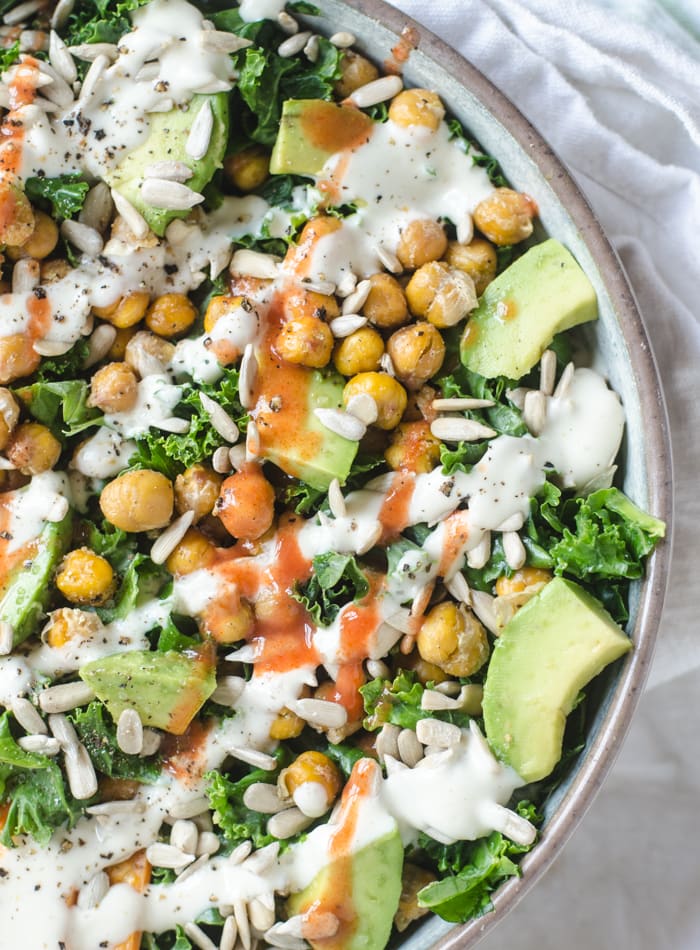
Hydration and Inflammation
I’m not going to get too into hydration but it’s important so we’ll touch on it quickly.
It’s pretty simple: chronic dehydration contributes to chronic inflammation.
Drink water steadily throughout the day and drink long before you feel thirsty to prevent ever being dehydrated. Dehydration negatively affects every system of the body: digestion slows, metabolism drops, heart rate and blood pressure increase, mental and physical abilities are reduced.
It causes constipation, indigestion, poor circulation, local inflammation, joint pain and muscle stiffness, loss of flexibility and on and on.
When you feel like you’re having a dip in energy, reach for a glass of water before anything else. Reaching for coffee or sugar as an energy source is only going to further the problem.
To prevent chronic dehydration, drink more water, aiming for 8 to 12 glasses a day, cut back on diuretics such as coffee and soda and reduce the amount of refined sugars, table salt and processed foods you eat.
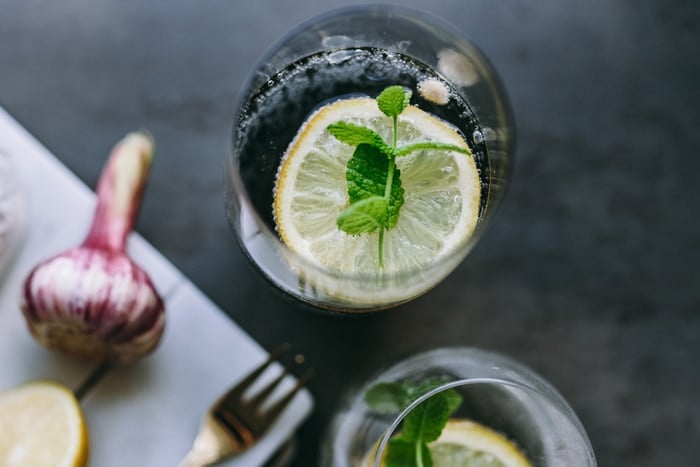
How can exercise help inflammation?
We’ve been talking about a lot about toxicity and there are many ways we can both reduce our toxic load and remove toxins from the body.
We can reduce our environment toxic load through things like using natural toothpaste and natural household cleaners, we can drink filtered water, eliminate artificial sweeteners, limit or eliminate alcohol, avoid tobacco and other drugs and choose organic foods when we can.
All of these are great ways to reduce the toxic load we place on our bodies but one of the easiest ways to remove toxins and enjoy an endless number of other benefits is through exercise.
Exercise eliminates toxins through sweat and breath, it reduces stress, balances hormones, improves circulation and strengthens the immune system. Plus exercise strengthens the body reducing the risk of injury and speeding up our ability to recover if an injury does occur.

Best Anti-Inflammatory Foods Summary
- essential fatty acids found in cold-water, oil fish: salmon, tuna, halibut, sardines
- pineapple (contains bromelain which is anti-inflammatory)
- fruits and vegetables (except potatoes, tomatoes and citrus fruits – lemons and limes are ok though!)
- garlic, ginger, turmeric
- flax seeds, hemp seeds, chia seeds
- walnuts
- cruciferous family vegetables such as cabbage, cauliflower and rapini
- half your body weight in pounds in ounces of water every day
Holistic Healthy Living
I want to touch base on this concept again. Eat whole foods. You could go on and on about the negative effects of eating processed meats, refined sugars and hydrogenated oils or get really specific about what foods to eat and what foods not to eat but it doesn’t have to be that complicated.
I love the science of nutrition and I think it can be immensely helpful to understand how powerful the food we eat is but honestly, it’s so simple.
If you recognize the food for what it’s made of, eat it. Your body will also recognize it and it will be able to effectively and efficiently convert it into energy, without overtaxing your organs and systems. Things will run smoothly. You can just feel it.
If you clog your system up with toxins, potential allergens and “foods” that are unrecognizable to your body, imagine the workload you place on it trying to dismantle these foods and extract any nutrition from them.
The liver, gallbladder and kidneys get clogged up. You literally feel inflamed. You can feel it in your digestion, you may be bloated, you can see it on your skin, you feel slow, lethargic, fatigued. Things are most certainly not running smoothly.
Eat this way consistently and boom, chronic inflammation that demands so much of your nervous, immune, circulatory and digestive systems that you’re now susceptible to countless diseases and infections.
The Anti-Inflammatory Lifestyle
It’s not that you can never eat a piece cake or enjoy a donut or a side of fries but it’s what we do consistently that’s important. Sure, if there’s something that makes you happy, go for it but most of the time, eat whole foods and work to get to a place where you actually want to eat that way. It shouldn’t feel like punishment or deprivation to eat healthily.
Extreme dieting comes with its own host of problems and we must move away from that and find a sustainable balance.
Continuing to educate yourself on these topics and understanding the science behind it can help you get to a place of joyfully eating a healthy, balanced diet, and in turn, this will naturally help heal inflammation. However, don’t underestimate the role of mental health and self-love in all this.
We have to heal our minds our first before we can truly change our lifestyles. Mindset is everything.
Letting Go of Rules
Once you understand how whole foods already contain everything you need, you can let go of the rules and just enjoy a range of different whole foods at each meal.
Portion size is important and overeating even healthy foods make it difficult for the body to process nutrients properly. Eating small, frequent meals can help to maintain stable blood sugar levels and improve digestive health thereby improving the absorption of nutrients and decreasing inflammation in the gut.
Stable blood sugar and the ability to absorb the right micronutrients improve our mood, energy and brain health and if you feel good mentally and physically, emotional eating is decreased. You know that saying “happy wife, happy life” well it should really be “happy gut, happy life” because every aspect of our mental and physical health is linked to the health of our gut. Treat it well.
You can heal yourself through food. If you want to feel better, take this seriously and make a change. Respect and love yourself enough to make better food choices so you can live a long life and actually get life out of those years.
Alright, that was a long post!! If you made it all the way through that, congratulations! Haha! Watch for the second post in this series coming soon. In coming posts we’ll be getting more into meal plans, recipes, more food and nutrition science as well as looking at gut health, stress, sleep and more ways to live a naturally anti-inflammatory lifestyle.

Best Anti-Inflammatory Books
There are many wonderful books on healing inflammation through diet and lifestyle. I recommend these books for further reading and wonderfully healing anti-inflammatory recipes:
- The Anti-Inflammation Diet and Recipe Book: Protect Yourself and Your Family from Heart Disease, Arthritis, Diabetic and Allergies
by Jessica K. Black, N.D. - Meals that Heal Inflammation: Embrace Healthy Living and Eliminate Pain, One Meal at a Time
by Julie Daniluk, R.H.N. - The Complete Anti-Inflammatory Diet for Beginners: A No-Stress Meal Plan with Easy Recipes to Heal the Immune System
by Dorothy Calimeris
Best Nutrition and Health Books
I also wanted to mention a few more books that have really helped me improve my relationship to food and ability to make the best food choices from a place of knowledge and understanding of the immense power of nutrition.
- In Defence of Food: An Eater’s Manifesto
by Michael Pollan - Whole: Rethinking the Science of Nutrition
by Dr. T. Colin Campbell - Wheat Belly: Lose the Wheat, Lose the Weight and Find Your Way Back to Health
by Dr. William Davis, - The China Study
by Dr. T. Colin Campbell - How Not to Die: Discover the Foods Scientifically Proven to Prevent and Reverse Disease
by Michael Greger - The Mind-Gut Connection: How the Hidden Conversation Within Our Bodies Impacts Our Mood, Our Choices, and Our Overall Health
by Emeran Mayar - Savor: Mindful Eating, Mindful Life
by
For more information on plant-based nutrition, read my vegan nutrition guide, how to transition to a plant-based diet and the best vegan protein sources.
My vegan macro cheat sheet and grocery list will also be helpful.

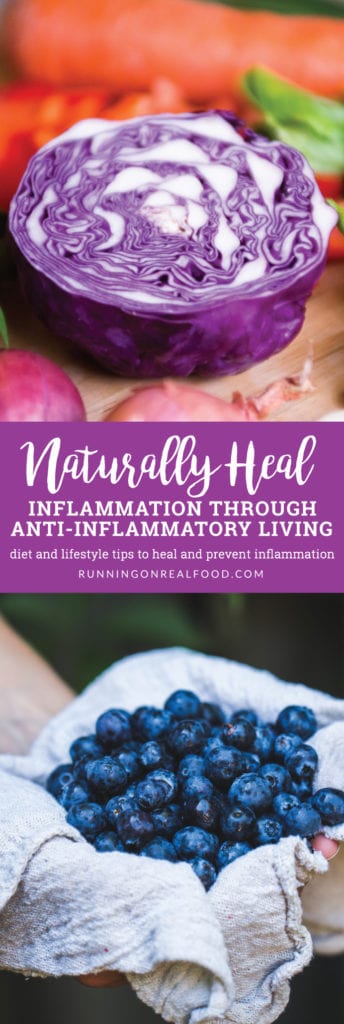

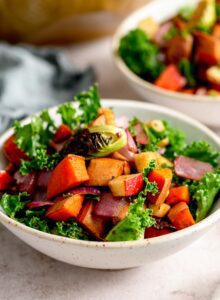
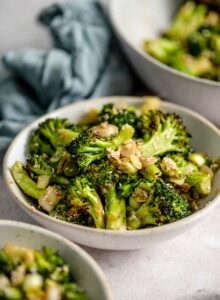
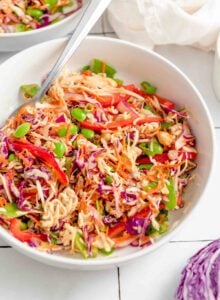
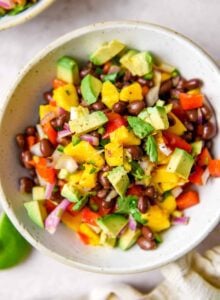
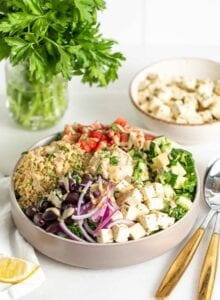
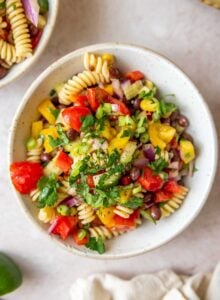
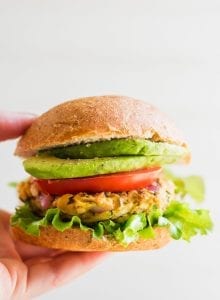
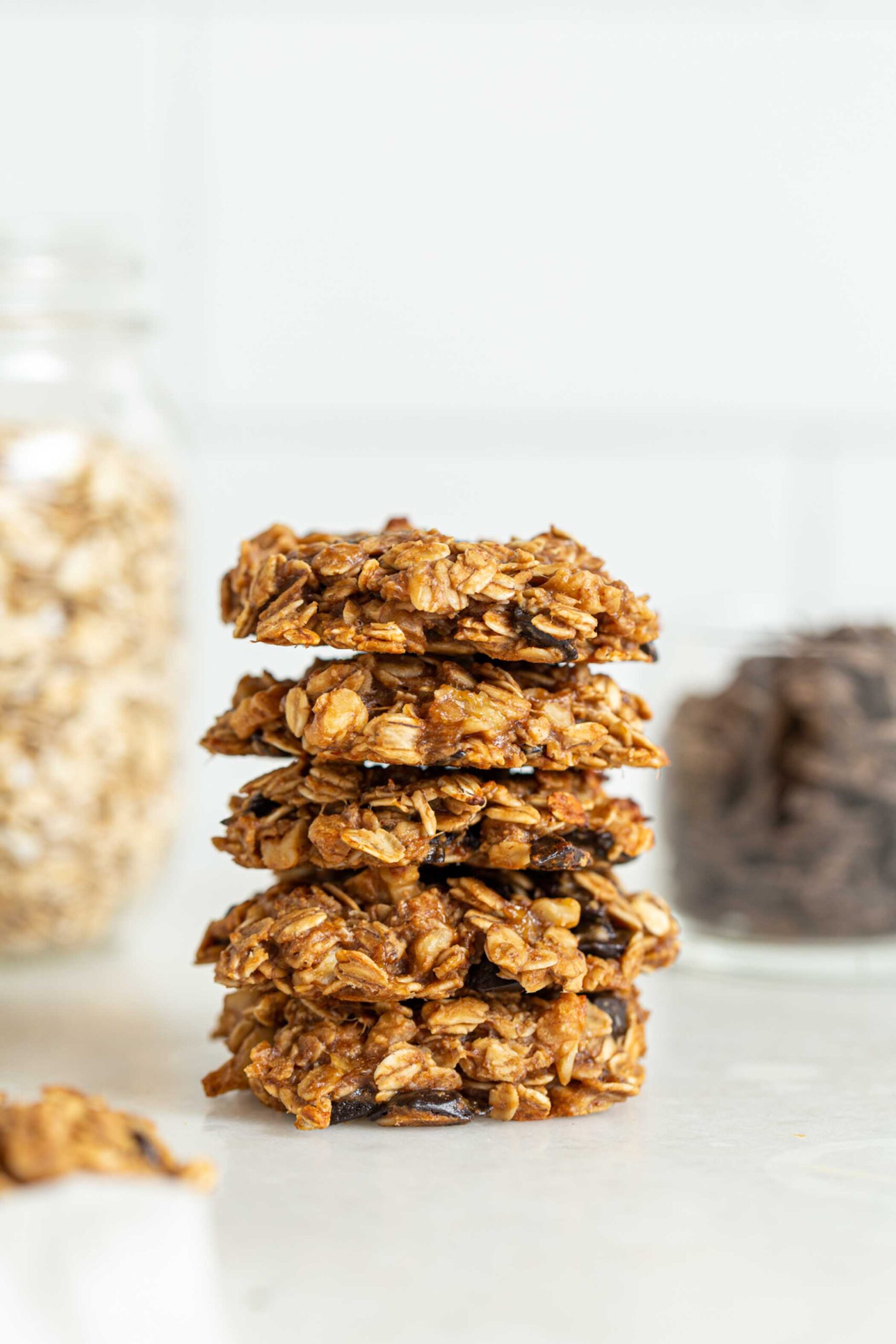
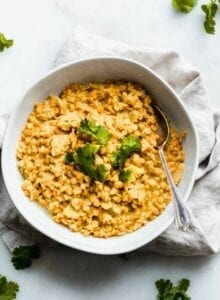
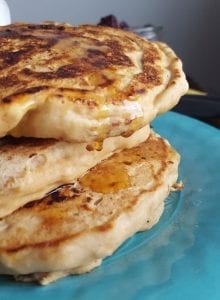
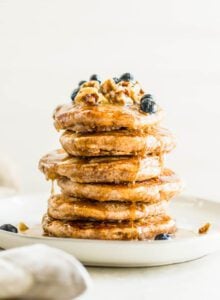

This is a great piece. So well written with great references. I am all into this. Thanks for the great summary.
Molecular mimicry is another researched cause of inflammation, so it’s not just people with an allergy who need to stay away from gluten. It’s people with an autoimmune disorder like Hashimoto’s thyroiditis, too.
This article was great! So informative and inspiring. Where can I find the part 2?
Part 2 was a post on breakfast ideas, here you go: https://runningonrealfood.com/anti-inflammatory-breakfast-recipes/
Hope it’s helpful!